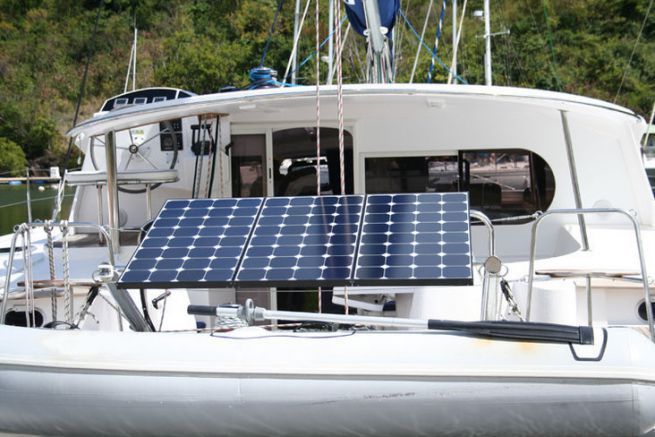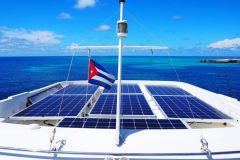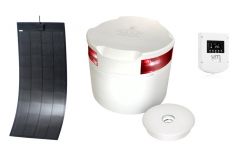The cells
There are 3 types of solar cells:
- Amorphous
- Polycrystalline
- Monocrystalline
Amorphous cells have practically disappeared from the market. Their efficiency (ability to produce electricity) was really too low.
Polycrystalline cells are made from silica chips. They are reconstituted cells. The yield is around 14% and these cells age quite rapidly.
The monocrystalline cells are cut from a pure silica bar. They are the most productive cells (between 17 and 24% yield). They are also the most expensive.
Good panels are all made with monocrystalline cells. It is this type of cell that Mobile Energy uses for all panel models, whether flexible or rigid.

The technological evolution of cells
To produce energy, the cells are connected to each other by tin contacts. These connections are visible by looking at a panel in detail. The Sun Power company, which produces cells, had the idea of passing these connections underneath the cell, leaving as much of the cell surface exposed to the sun as possible. In fact, these circuits represent 20% of the cell surface. 20% that are not illuminated by the sun and produce nothing.
For the same power, this technology called Back Contact, protected by a patent, makes it possible to make solar panels 20% smaller. The efficiency is thus increased since a Back Contact panel has an efficiency of 24% compared to 17% for a traditional panel.
The price of these new generation solar panels is about 30% higher, but this price difference is reflected in the energy production earned.
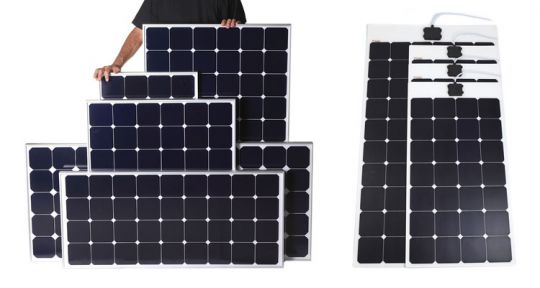
Hard or soft?
Traditional solar panels are rigid. They are mounted in an aluminium frame and protected by glass. This is the most reliable solution, because the protective glass is not affected by spray and UV rays. Well ventilated and installed on a gantry or davits, their efficiency can be further improved if the davits are adjustable. But the disadvantage of these panels is their weight. They are heavy, cumbersome and cannot be walked on.
The so-called "soft" panels then appeared. This type of panel can take a certain radius of curvature (rather small). The cells are no longer protected by glass, but by an ETFE anti-slip polymer resin. The absence of an aluminium frame and glass allows these panels to obtain a significant weight saving: thus a rigid HP115 panel weighs 9kg against 1.35kg for a flexible HPFlex 115 panel.
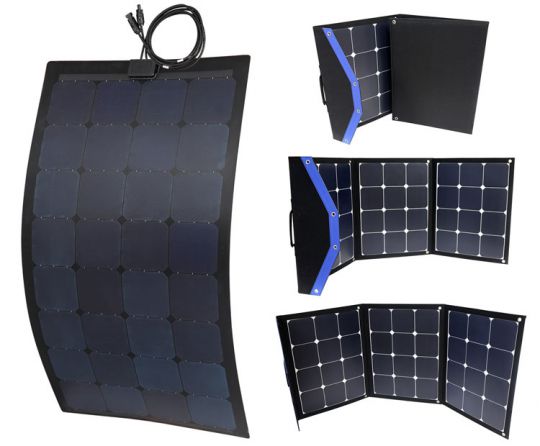
These flexible panels are built with the same solar cells as the rigid ones. For the same size, they have the same performance. However, the panels installed on a flat deck lose a little of their efficiency due to the heating of the cells and various shadows (mast, sail...). On the other hand, the performance of flexible panels can be optimised by making them removable (with the installation of eyelets) and thus being able to orientate them as well as possible according to the sun. Production can then be multiplied by 2!
In this case HP Flex and HPP folding panels are also recommended.
Finally, although rigid panels are now largely reliable, we still have little experience of the lifetime of flexible panels.
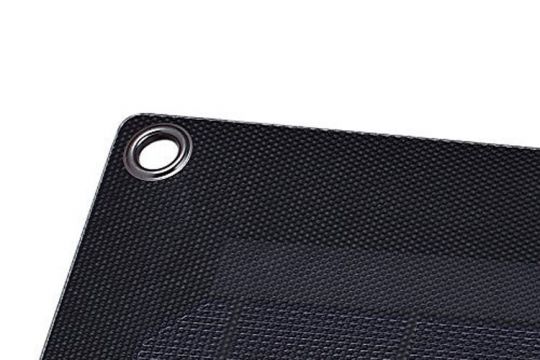
The right regulator
The solar power generation chain must be perfect from one end to the other. There's no point in installing splendid panels with magni?que efficiency if they can't transmit all their energy to the battery. A regulator must be installed between the panels and the battery to be recharged. This converts the panel voltage (often 20 V) into a voltage that can be used for charging (14 V). There are two types of regulators to do this job. PWM regulators and MPPT regulators. Behind these barbaric names lie two modes of processing of the electric ?ux. Let's take an example. A panel that charges 5A at 20 V will make 100 W (according to the formula P=UI with U=20 V and I=5 A we find P= 100 W) A traditional PWM regulator is in charge of lowering the voltage so that it is accepted by the battery. It changes it from 20 V to 14 V. It does not affect the amperage. So with the previous formula, we find the transmitted power: P=14 x 5 = 70 W. The nice 100 W panel will not be able to transmit more than 70 W... A MPPT regulator converts the voltage drop by increasing the amperage to always reach the nominal power of the panel. This regulator embeds more complex electronics which unfortunately costs more. At Energie Mobile, the 2 types of regulators are in the catalogue with prices varying for regulators of comparable power. For example for a power of 10 Amperes, the EMA10 regulator is at 22eurosHT and the MPPT1012 at 49eurosHT.
